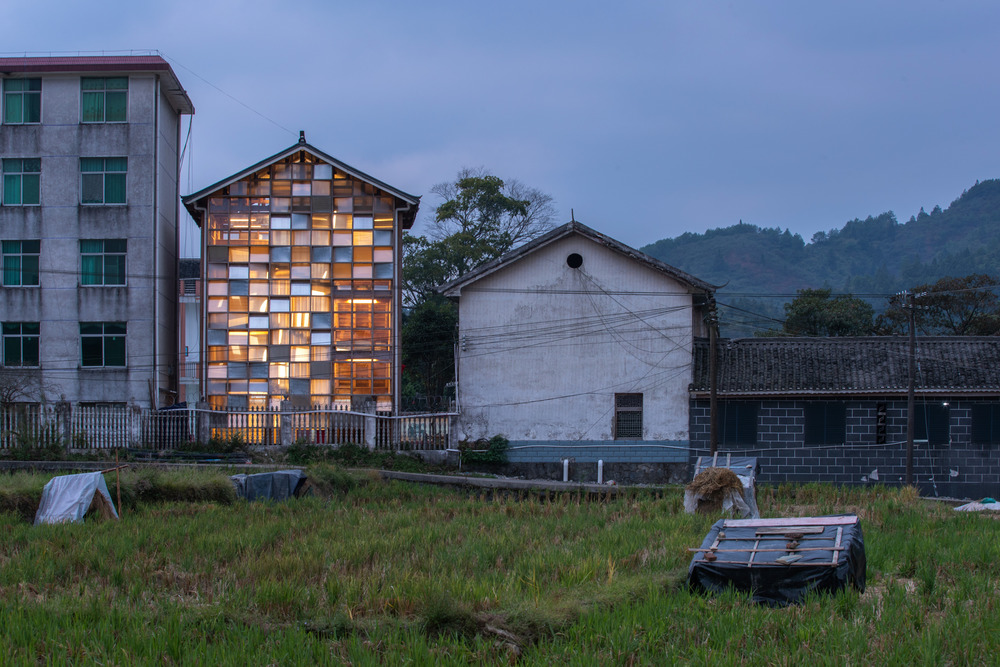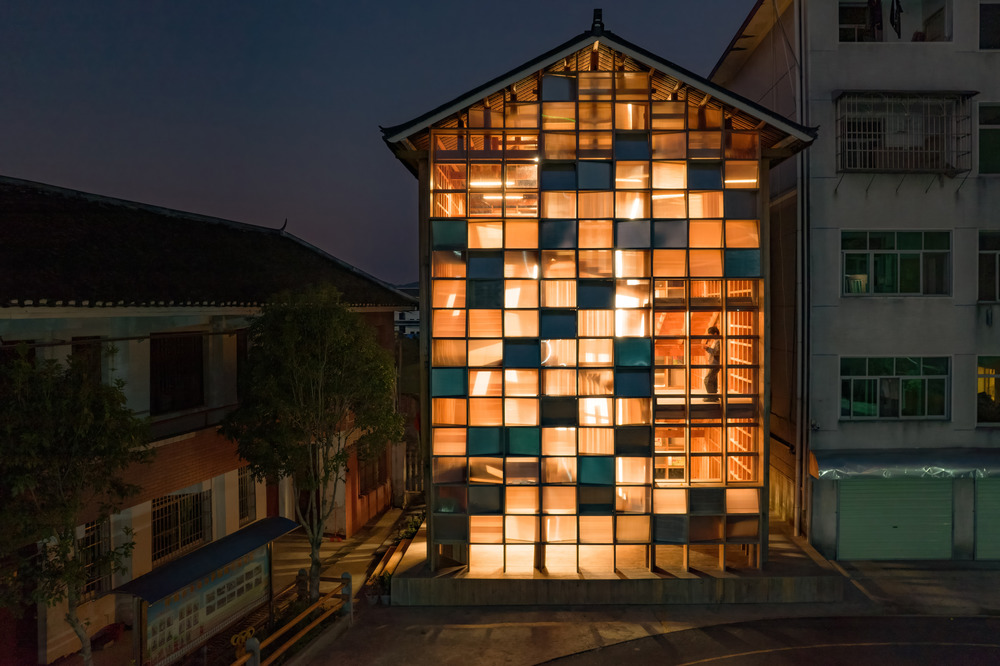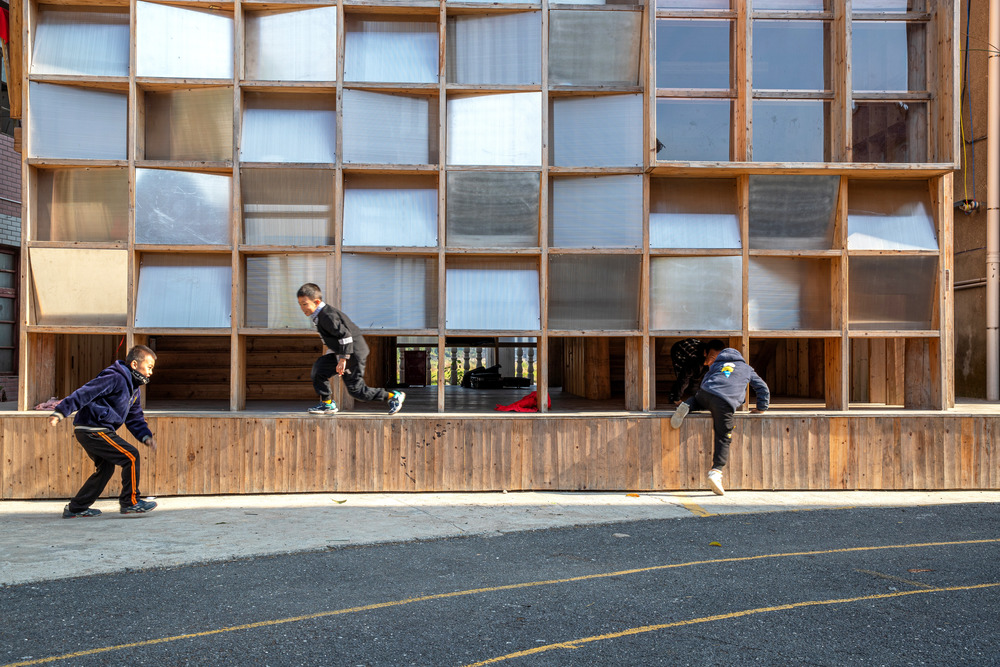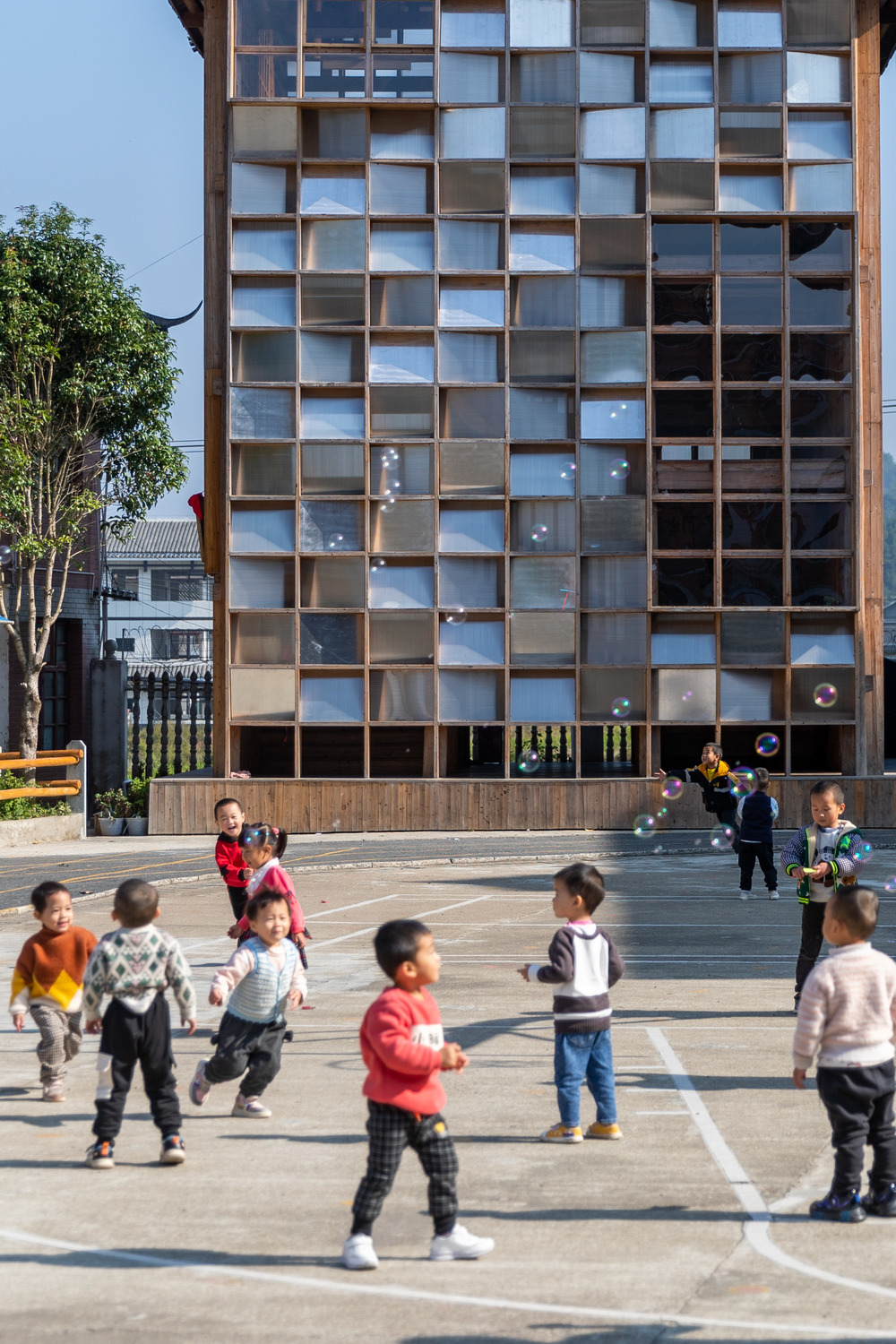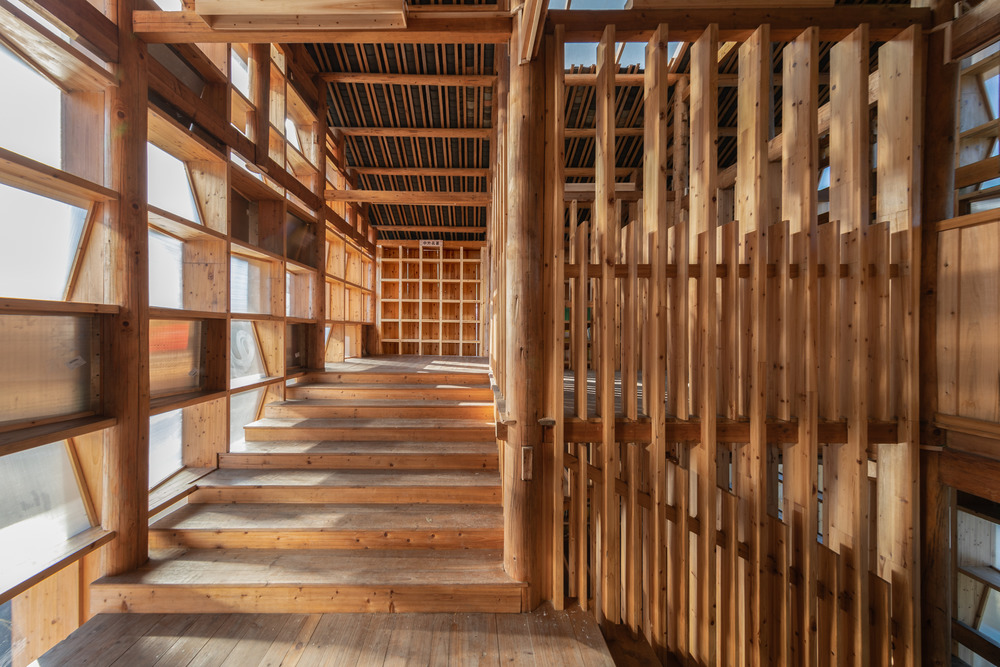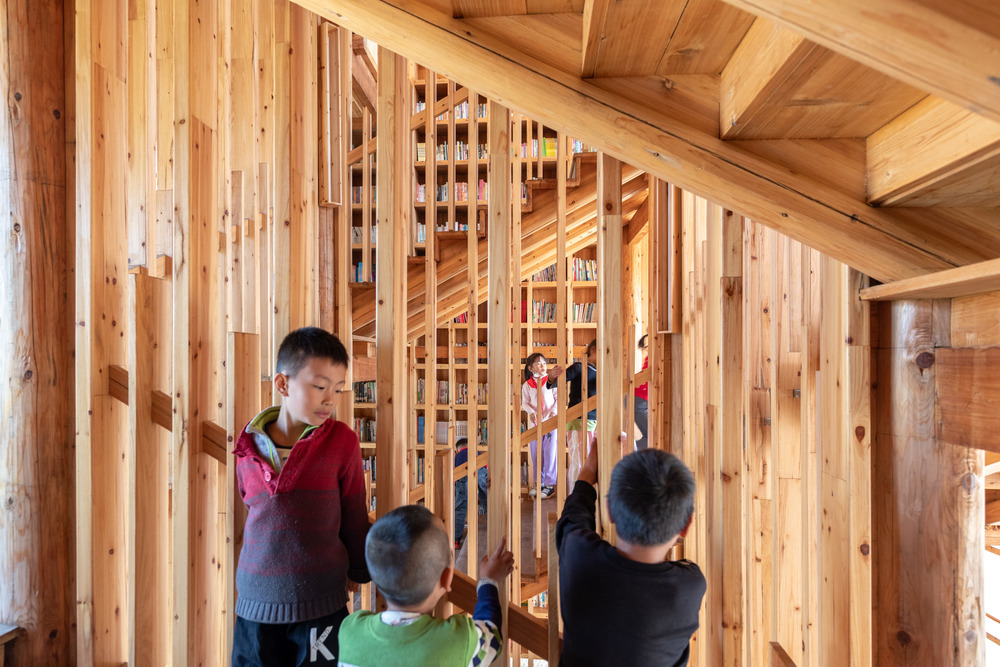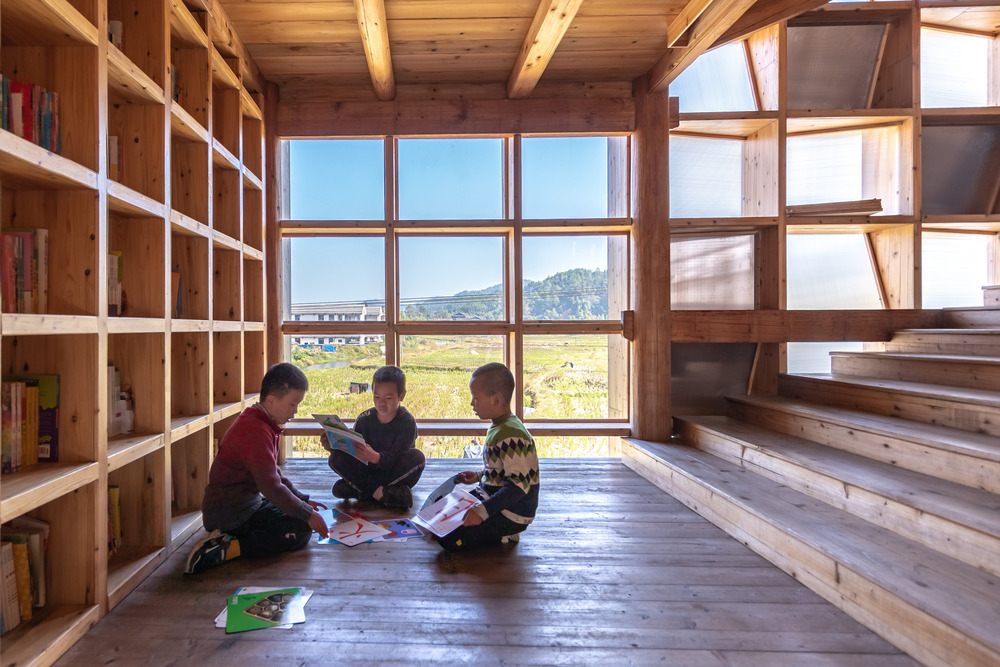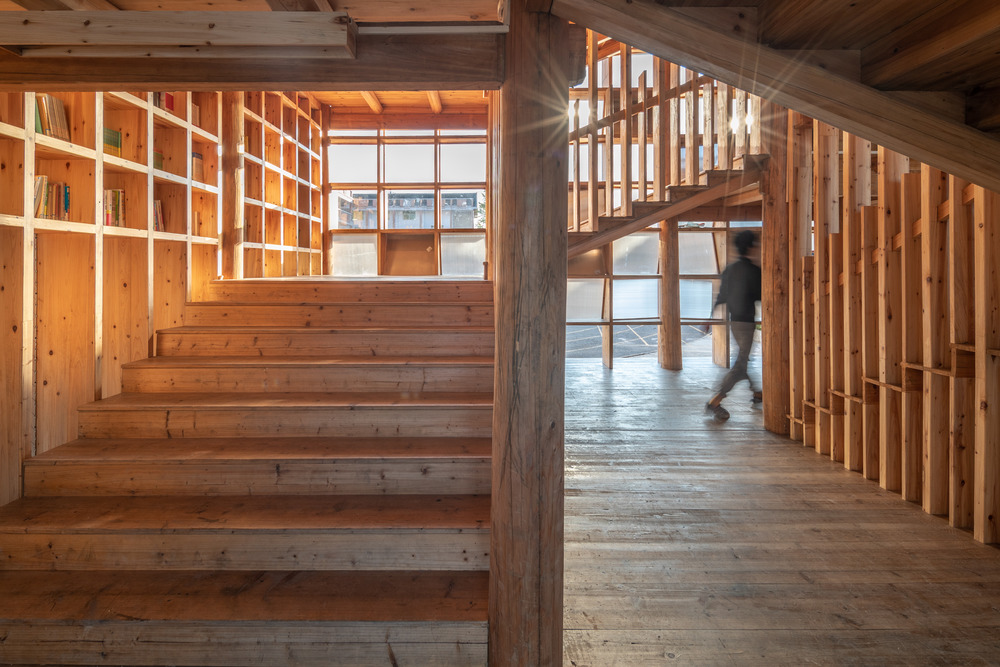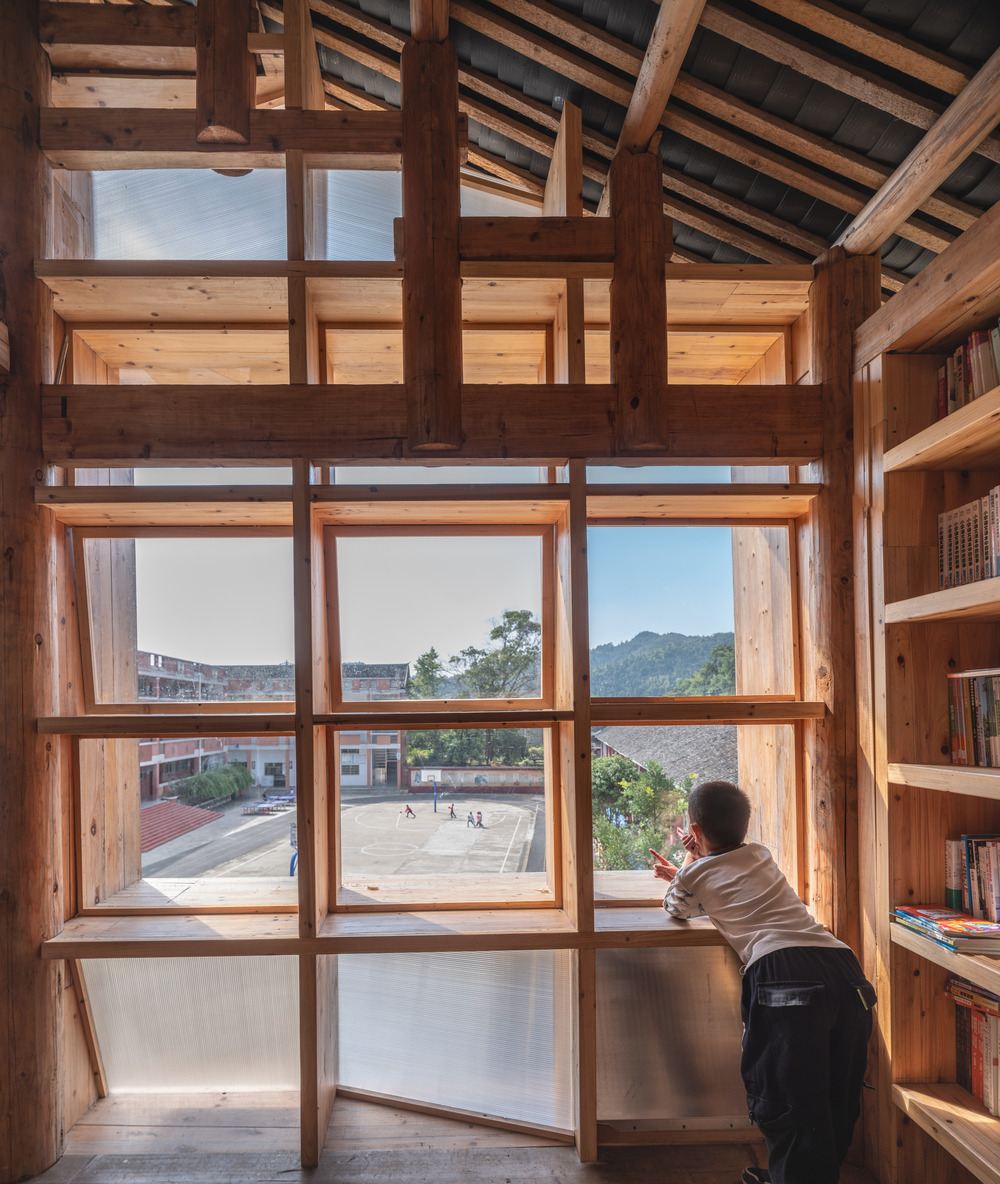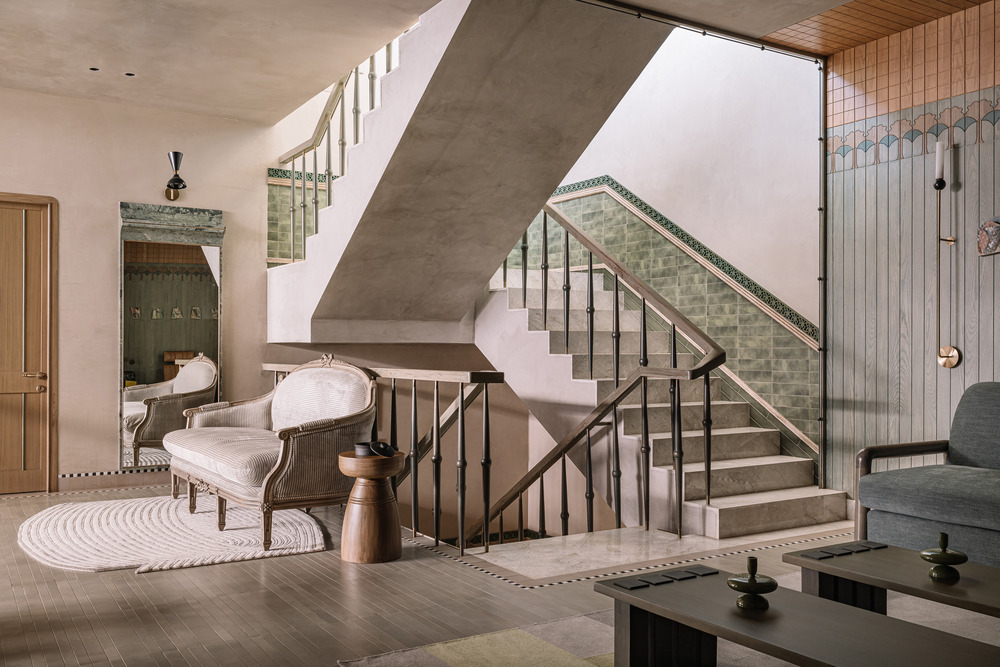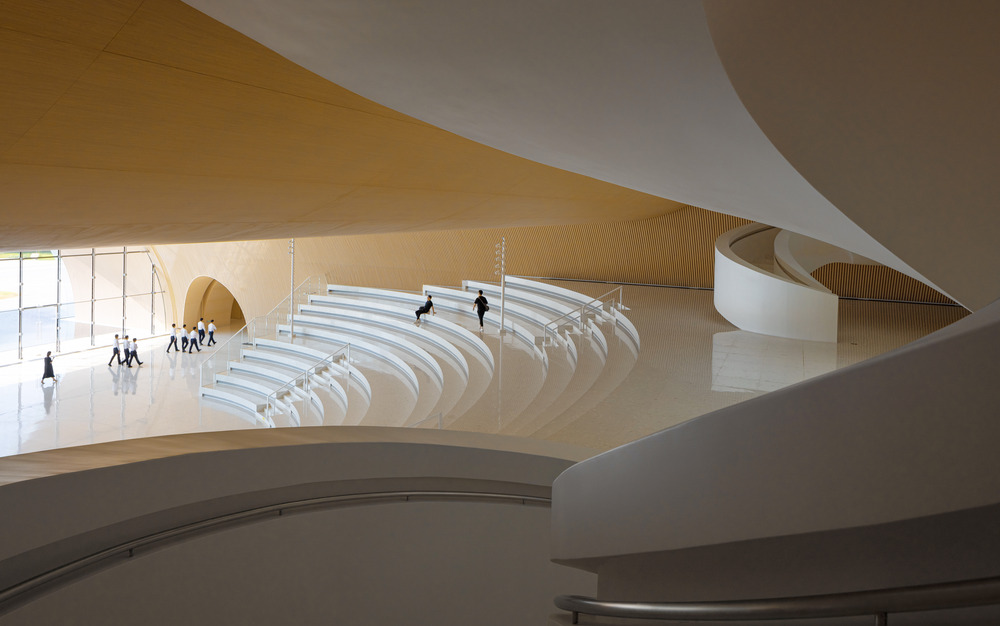The Pingtan Book House veers away from ordinary libraries as a place where kids can read and play at the same time.
For years, Dong Minority villages have been confronted with the decline of their beautiful architectural heritage. Entire villages, built over centuries from a single sustainable material – indigenous China Fir – are rapidly losing their identity. Dong’s cultural DNA is being challenged by contemporary living and increased modernisation.
One such example is the Pingtan primary school, which accommodates more than 300 children and comprised of a cluster of five buildings, including a hall and canteen, classroom, dormitories, and an administration building, all surrounding a courtyard.
For these reasons, Condition_Lab saw an opportunity to introduce a timber structure that retains the Dong architectural DNA and a sense of heritage. The design fosters a form of “living heritage” to reconnect and inspire children, while allowing them to appreciate their culture. The project is the second library designed by Condition_Lab in the region, with the first being Gaobu Book House, located 10 kilometres upstream. The idea is simple – each project mirrors the traditional typology of the Dong “Galan” timber frame house and adapts it to a contemporary design.
- Photo credit: Zhao Sai
- Photo credit: Zhao Sai
- Photo Photo credit: Zhao Saicredit: Zhao Sai
- Photo credit: Zhao Sai
Condition_Lab collaborated closely with local carpenters and students from the CUHK School of Architecture. A book house is built entirely out of timber, with the exception of polycarbonate used in façade panels for sunlight to filter in and provide external views. Construction followed traditional Dong carpentry details, composed of interlocking parts as the main structural bond.
This projects delivers two key values. First, it relates directly to the children of Pingtan, who beyond enjoy playing in the library, have learned that their culture lives and remains relevant in this rapidly-changing world. The second relates to the discipline itself, at a moment when architecture, particularly in urban metropolises like Hong Kong, appears to have lost its soul to ever demanding developers. That reality makes one aware of the social importance of architecture.
- Photo credit: Zhao Sai
- Photo credit: Zhao Sai
- Photo credit: Zhao Sai
- Photo credit: Zhao Sai
- Photo credit: Zhao Sai
Source: v2com

